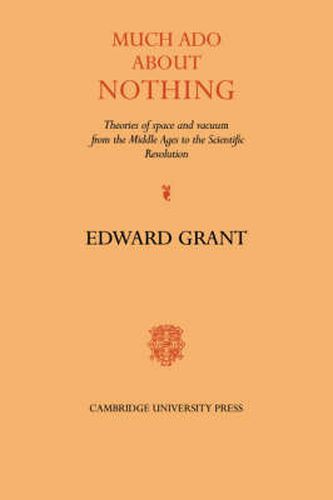Readings Newsletter
Become a Readings Member to make your shopping experience even easier.
Sign in or sign up for free!
You’re not far away from qualifying for FREE standard shipping within Australia
You’ve qualified for FREE standard shipping within Australia
The cart is loading…






The primary objective of this study is to provide a description of the major ideas about void space within and beyond the world that were formulated between the fourteenth and early eighteenth centuries. The second part of the book - on infinite, extracosmic void space - is of special significance. The significance of Professor Grant’s account is twofold: it provides the first comprehensive and detailed description of the scholastic Aristotelian arguments for and against the existence of void space; and it presents (again for the first time) an analysis of the possible influence of scholastic ideas and arguments on the interpretations of space proposed by the nonscholastic authors who made the Scientific Revolution possible. The concluding chapter of the book is unique in not only describing the conceptualizations of space proposed by the makers of the Scientific Revolution, but in assessing the role of readily available scholastic ideas on the conception of space adopted for the Newtonian world.
$9.00 standard shipping within Australia
FREE standard shipping within Australia for orders over $100.00
Express & International shipping calculated at checkout
The primary objective of this study is to provide a description of the major ideas about void space within and beyond the world that were formulated between the fourteenth and early eighteenth centuries. The second part of the book - on infinite, extracosmic void space - is of special significance. The significance of Professor Grant’s account is twofold: it provides the first comprehensive and detailed description of the scholastic Aristotelian arguments for and against the existence of void space; and it presents (again for the first time) an analysis of the possible influence of scholastic ideas and arguments on the interpretations of space proposed by the nonscholastic authors who made the Scientific Revolution possible. The concluding chapter of the book is unique in not only describing the conceptualizations of space proposed by the makers of the Scientific Revolution, but in assessing the role of readily available scholastic ideas on the conception of space adopted for the Newtonian world.